Who wouldn’t want to be a step above others? Obviously, a ladder is a definite must-have in any home. Whether it’s for changing a burned-out light in your chandelier, cleaning out your gutters, or reaching for your hidden stash of candy secreted away on the top shelf, a ladder will help you reach new heights.
However, while all ladders will essentially work the same, they essentially aren’t all the same. Which makes choosing the right ladder for the job slightly more complicated than what one would expect. We’re spoiled for choice when it comes to ladders but not all of them can be used the same way, nor will all of them be safe to stand on.
To help you figure out which one or ones will suit your needs best and ensure your safety, we’ve tested all sorts of ladders and compiled a list of the best ladders.
Top 10 Ladders Of 2020 Reviewed
1. The Little Giant Flip-N-Lite
The Little Giant Flip-N-Lite is a platform ladder that has a duty rating of Type IA and a load capacity of 300 pounds, making it ideal for DIY projects around the home. It’s slim and lightweight with a maximum weight of 14 pounds (6-foot model). It’s easy to carry around and you can even open the ladder one-handed. The platform is 14. 25 in. x 12 in. which provides you with heel-to-toe foot support.
The tall handrail gives you more stability and security whenever you use it. And there’s even a tool tray for nails, certain tools, etc. on the handrail. However, the narrow tray isn’t ideal for some tools such as cordless drills or materials such as paint cans. Also, some buyers have reported receiving damaged ladders. Plus, there is no lock to keep it in its collapsed position.
Pros:
- Stable
- Tall handrail
- Load capacity of 300 pounds
Cons:
- Narrow tool tray
- Some buyers received damaged ladders
- No lock to keep it in the collapsed position
2. Werner MT-22
 Best Multi-use Ladder
Best Multi-use Ladder
The Werner MT-22 is a 22-foot telescoping multi-purpose ladder that can be reconfigured into a twin-step ladder, an extension ladder, or a scaffold. It features soft-touch push button knobs for reconfiguring the ladder. Height adjustment is done with spring-loaded J-locks. The ladders have a 300-pound loading capacity (type 1A), perfect for industrial applications.
Other standout features include the smoothly curved rails, the double-riveted steps, and extra-wide flared bottom which increases stability. The heavy-duty non-marring feet ensures your ladder won’t slip once it’s set up properly. However, it is very heavy and may not be easily carried by petite or elderly individuals. And because of its weight and bulkiness, it isn’t ideal for quick jobs inside the house.
Pros:
- Very versatile
- Soft-touch push button knobs
- Extra-wide flared bottom
Cons:
- Very heavy
- Not ideal for quick jobs around the house
3. Little Giant 22-Foot Velocity Multi-Use Ladder
 Best Ladder For Stairs
Best Ladder For Stairs
This multi-use ladder has a 300-pound rating and a length of 22 feet. You can easily convert it into a 19-foot extension ladder, an A-frame ladder (maximum height is 9’1”), a 5’7″ step ladder, or even as a scaffold system (accessories sold separately). With the Little Giant Ladder, you’ll be able to use the right ladder for any job. It features the Rock Lock system which allows you to easily adjust the configuration and length of the ladder. Storage isn’t a problem since it has a slim 9-inch profile.
And transporting it from one location to another isn’t difficult either with its built-in glide wheels. Because it is made of aluminum, the ladder isn’t that heavy and is rust-resistant. However, you can’t use this on electrical projects because it will conduct electricity. Also, some users found the rungs a bit on the narrow side.
Pros:
- Very versatile
- Rock Lock system
- Lifetime warranty
Cons:
- Requires you to purchase additional accessories to configure this into a scaffold system
- Not for electrical work
- Narrow rungs
4. Rubbermaid RM-3W Folding 3-Step
 Best Step Ladder For Home Use
Best Step Ladder For Home Use
The Rubbermaid RM-3W is a 3-step steel ladder that features large, plastic steps with a soft, comfort grip. It folds up quite easily and its slim profile allows you to store it just about anywhere. The maximum height reach of this ladder is 8.9 feet which makes it ideal for performing chores around the house such as changing that burned out lightbulb in the living room.
The ladder has a Type III duty rating and a load capacity of 200 pounds. Because it is made of steel, the ladder is much heavier than most buyers expected – 12 to 13 pounds. Also, some users found the steps to be a bit steep.
Pros:
- Very sturdy
- Folds up easily
- Slim profile
Cons:
- Heavy for a step stool
- Steep steps
5. Cosco Three Step Max Steel Work Platform
 Best Ladder For Painting
Best Ladder For Painting
The Cosco Max Work Platform Ladder is a Type II duty-rated ladder with a maximum weight capacity of 225 pounds. The slip-resistant treads help prevent accidents while the non-marring, skid-resistant leg tips and glides ensure that the ladder remains stable when properly set up. It features a one-hand fold and lock release system so you can easily carry this ladder around the house while holding tools and/or materials in the other hand.
What makes this particular ladder standout is the work tray that comes with it which can easily fit paint cans and cordless drills for DIY projects around the home. However, it isn’t a lightweight ladder. At 23 pounds, some users found it a bit heavy for carrying around. Also, the skid-resistant tips are made of plastic instead of rubber which may be a problem on some surfaces.
Pros:
- Wide work tray
- Solid and stable
- Easy to fold
Cons:
- Slightly heavy
- Plastic tips may slide on certain types of surfaces
6. Ohuhu EN131 Telescopic Extension Ladder
The Ohuhu Telescopic Extension Ladder is perfect for individuals who are on-the-go and for those who lack the space for storing larger ladders. When collapsed, the ladder only measures 40.2 inches. When extended, the height of the ladder is 12.5 feet. Made from premium aluminum alloy, it’s just a little over more than 25 pounds. Setting up this telescopic ladder is quite easy, so is folding it back down.
The ladder has an anti-pinch design to keep your fingers safe as well as non-slip end caps to keep the ladder stable. However, since this is an aluminum ladder, you can’t use this on electrical projects or near electrical wires. And while it does feel sturdy enough, it feels a bit wobbly when you’re getting higher up. The maximum weight capacity is 330 lbs so it should be strong enough to hold you and any tools you need. But it lacks the rigidity of an extension ladder, something you sacrifice when choosing a telescopic ladder.
Pros:
- Compact and lightweight
- Easy to use
- Anti-pinch design
Cons:
- Conducts electricity
- Feels slightly wobbly when high up
7. Louisville Ladder FS1508
Louisville Ladder FS1508 is a twin-step ladder that is constructed of fiberglass. This 8-foot ladder has a type 1A duty rating with a 300-pound load capacity. To make the ladder even sturdier, each step features 6 large headed, semi-tubular steel rivets. This a double rivet construction ensures that the rungs won’t be bending at all under your weight. What we really love about this the work tray that is built-in at the top of the ladder.
It features a lot of handyman tool slots such as three different can holders, a cordless drill holder, a 2×4 holder, and a pipe holder. You don’t need to use this ladder as a Stairmaster when you already have everything you need right there with you. However, we found it slightly difficult to set up and put away. The joints are a bit on the stiff side. Also, there are a number of buyers who received scratched or used ladders when buying from Amazon.
Pros:
- Excellent work tray
- Fiberglass construction
- Sturdy build
Cons:
- Can be hard to open and close
- Some new ladders came in poor condition
8. Cosco World’s Greatest Multi-Position 21-Foot Ladder
 Best Ladder For Cleaning Gutters
Best Ladder For Cleaning Gutters
The Cosco World’s Greatest Multi-Position Foot Ladder is a great tool to have for any home handyman. It can be reconfigured into a twin-step ladder, an extension ladder, a scaffold, a wall ladder, and even a stairway ladder. There are 10 different height options to choose from which means you can reach any height you desire (just not the sky, okay?).
Its maximum weight capacity is 300 pounds which means that it can be used for industrial applications as well. The flared legs and slip-resistant feet increase the ladders stability. Positive locking hinges to ensure that the ladder stays in its current configuration. The boxed aluminum frame makes the ladder sturdy and rust-resistant. However, it’s not designed for work on electrical projects. Also, it’s very heavy and bulky.
Pros:
- Very versatile
- Stable and sturdy
- 10 different height options
Cons:
- Not for electrical projects
- Heavy and bulky
9. Werner D6228-2
 Best Extension Ladder
Best Extension Ladder
The Werner D6228-2 is a 28-foot extension ladder constructed out of fiberglass. It has a duty rating of 300 pounds which makes this an ideal choice whether you’re planning on doing residential or commercial jobs. The base and fly sections can be separated so you can opt to use the base as a single, straight ladder if you so choose. The aluminum steps are slip-resistant Traction-Tred D rungs and feature Werner’s Alflo rung joint connection which prevents the rungs from twisting and ensures a safe climb.
Unlike other extension ladders on our list, this one comes with a rope and pulley system for a smooth setup. There’s even a rope clamp to help you tie up the rope to the rung and keep it out of the way. The Shu-Lok slip-resistant pad and spur plate will ensure your ladder stays stable even when set on the soft ground.
However, it is very heavy so you might need someone to help you set this up whenever you need it. Also, it is very expensive. Something you might want to take note is that a lot of reviews online are due to shipping damages. The ladder itself is an excellent investment, especially for the quality you get.
Pros:
- Fiberglass construction
- Slip-resistant Traction-Tred D rungs
- Shu-Lok slip-resistant pad and spur plate
Cons:
- Requires a two-man operation – very heavy
- Very expensive
10. Support Plus Folding 4-Step Safety Ladder
The Support Plus Folding 4-Step Safety Ladder is ideal for individuals who need the extra help with their balance. Unlike regular step ladders where you use the frame of the ladder to help you climb up, this safety ladder comes with dual handrails that are padded. You can safely climb up and down while comfortably gripping the rails of your ladder. Each of the steps provides you with heel-to-toe support at 10.25″ deep.
And they’re also slip-resistant to help prevent accidents. At the top of the ladder is a handy tool caddy with 10 different-sized pockets that can hold all the tools and materials you need to work around the house without having to go down the stairs. Seems to good to be true, right? Well, there are drawbacks.
While the ladder does fold down flat, the handrails do not. So you need to take that into account (10″ deep) when storing it away. Also, you’ll need to install the handrails yourself which some users found difficult. Another thing we noted is that it is a bit on the heavy side for a step ladder. Some individuals may find it too heavy.
Pros:
- Handy tool caddy
- Handrails
- Wide steps
Cons:
- Requires assembly
- Heavy
How to Choose the Best Ladder: the Ultimate Buying Guide
Did you know that there is no other country in the world that has the most ladder deaths than us? According to the World Health Organization, there are over 164,000 people that are treated in the ER for injuries caused by falling from a ladder each year. Also, around 300 deaths in the US each year are due to falls from a ladder. Here’s another jaw-dropping statistic – most of these ladder deaths occur from falls of 10 feet or less.
And while some of these injuries and deaths may be due to faulty design or poor quality, most of these are caused by improper use. If you’re in the market for a new ladder, you’ll need to make sure you get the right one for the job. And we’ve got just the guide to help you figure out which ladder is best.
Types of Ladders
Ladders may all have the same function – to help you reach a certain height – but not all of them will be exactly the same. For one, ladders come in varying heights. They can also have different features. Below are the three main types of ladders that will help you do jobs around the house.
Step Ladders
These ladders feature an A-frame design with spreader bars that will lock into place to hold the ladder in the correct position. These self-supporting ladders are best suited for jobs that are relatively close to the ground and in locations where you do not have a nearby stable support surface such as inside the home – you know, like changing the patio lights. . Those that allow you to use both sides are called twin-step ladders.
Platform Ladders
A variation of step ladders, this type features a platform or a standing surface instead of a top step as well as a top rail guard that is typically 2 feet above the platform to give the user an additional point of contact and stability. One of our top picks, the Cosco Three Step Max Steel Work Platform, is a platform ladder.
Multi-use/Multi-position Ladders
Based on the name, you already know that these are versatile ladders that can be used either as a step ladder, an extension ladder, or (for some) a scaffold. Because these ladders have multiple configurations, you can even set it up on stairs, as a twin-step ladder, or as a sawhorse. Disadvantages of these ladders are the fact that they’re heavy like the Werner MT-22 which weighs a little over 42 pounds and a bit expensive. Plus, it can be hard to set up due to the multiple locking points.
Extension Ladders
These ladders are designed for projects that require you to reach a height of 17 feet or more. A typical extension ladder will have a base section and one or two fly sections – the part of the ladder that will slide up and down. Locks will keep the extended sections in place. Some models will feature a rope and pulley system to make extending the ladder easier. These ladders typically have anti-sleep feet or pivoting feet to ensure stability.
Telescoping Ladders
These are a type of extension ladder but instead of a base section and a fly section, you have overlapping sections that will slide in and out of each other as you adjust the ladder to reach your desired height. The beauty of this type of ladder is its compact, easily portable size without sacrificing height. For example, the Ohuhu EN131 Telescopic Extension Ladder can collapse down to 40.5 inches but can reach 12.5 feet when fully extended. However, there is a danger to using this type of ladder, particularly when you’re collapsing it. Doing this too quickly can be hazardous to your hands and fingers.
What are Ladders Made of?
Ladders can be made of aluminum which is lightweight, easily maneuverable, and corrosion-resistant. However, aluminum conducts electricity so this should never be used to work on electrical projects or projects that are near electrical lines and other voltage sources.
Some ladders like the Louisville Ladder FS1508 are made of fiberglass which is ideal for working on electrical projects because it won’t conduct electricity when dry. Fiberglass ladders are also very sturdy and durable. Wooden ladders are sturdy as well. However, manufacturers sometimes use metal fasteners which means they’re unsuitable for work on electrical projects or near electrical lines.
Other materials used to make ladders include steel, and plastic, all of which are typically seen in step stools.
What are Ladder Duty Ratings?
The duty rating or load capacity rating of a ladder indicates the maximum weight that a ladder can handle. Some manufacturers also call this performance rating. When choosing a ladder based on its duty rating, make sure that you use the weight of the heaviest individual who may use the ladder plus the weight of any materials and tools that will be carried onto the ladder. The duty ratings listed below are provided by the American National Standards Institute (ANSI).
| Type | Maximum Weight | Application |
| 3 | 200 lbs. | Household Duty (general household use) |
| 2 | 225 lbs. | Professional Duty (commercial painter, handyman, etc.) |
| 1 | 250 lbs. | Commercial Duty (industrial applications) |
| 1A | 300 lbs. | Industrial Duty (industrial applications) |
| 1AA | 375 lbs. | Special Duty (high-impact industrial/professional use) |
What are the Features and Accessories of a Ladder?
Take note that these are not all available with every single ladder sold in a store. But knowing what features may be of use to you can help you narrow down your search.
Folding work shelf: some step ladders have this feature, allowing you to easily reach tools and materials while working on it. They work more like the folding wagons, with parts that can be folded and for convenience and ease of storage.
Notches/holes: some ladders will have these features, enabling the ladder to “hold” compatible accessories such as platforms, buckets, trays, and paint cups that can be attached. The Werner D6228-2 already comes with pre-pierced holes and nooks to allow you to install several accessories such as pole lashes, v-rung assembly, and a cable hook.
Leveling system: with some extension ladders, you can adjust the ladder and accommodate uneven surfaces. Others will come with a built-in bubble level to help you check your adjustment. Some manufacturers sell levelers that are compatible with their models.
Stabilizer: this accessory has wide tubular arms and non-skid rubber pads that you can attach to the top of an extension ladder. Using this will not only increase your ladder’s stability, it will also allow you to work around windows, eaves, and high walls.
So, How Do I Know Which Kind of Ladder is Right for Me?
The first thing you have to do is to choose what ladder will be right for the job. Ask yourself the following questions:
- Where will I be using the ladder? Is it indoors, outdoors, or both?
- What projects will I be working on that requires me to use a ladder?
- Will I need to work on or near electrical lines?
- How much weight will I be putting on the ladder including the materials and tools?
- What is the maximum height that I want to reach?
Talking about height, it is important to remember that the highest standing level on a stepladder is two steps down from the top. Any higher than that and you risk falling. The maximum safe reaching height for any ladder is 4 feet higher than the length of the ladder. For example, if you need to reach a 10-foot ceiling, you’ll need a 6-foot ladder to safely reach it.
For extension ladders, height has different requirements. You need to choose a ladder that is 7 to 10 feet longer than the highest contact point of the support surface you’ll be placing the ladder on such as the wall or roof line. With that much leeway, you will be able to overlap the ladder sections, overcome height restrictions, and even extend the ladder above the roof line if necessary. Unlike step ladders, the maximum standing level of an extension ladder is 4 rungs below the top.
Once you have decided on a ladder, you need to try before you buy. With step ladders, you can check how it “reacts” when you shift your weight. WIth a multi-purpose ladder, check the locks and see if they adjust easily and are solidly constructed. Look for slip-resistant rungs/steps to decrease the chances of an accident. With the right ladder in place, you can definitely reach new heights and not fall on the job.


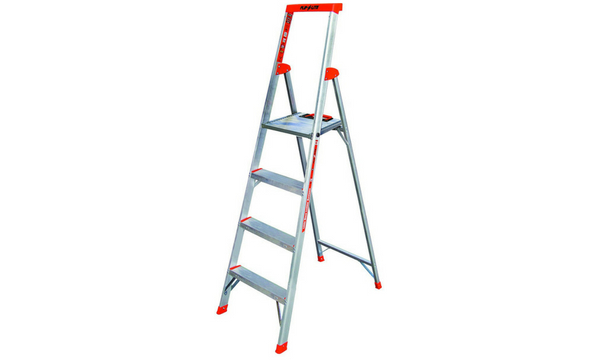
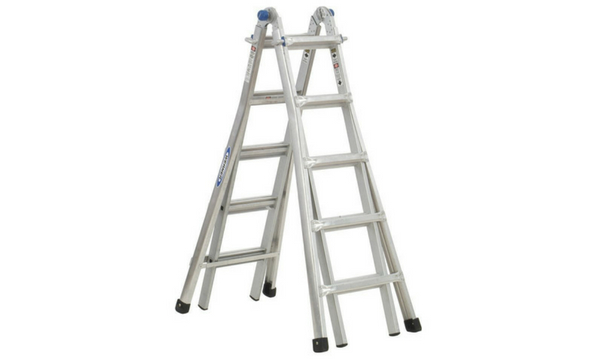
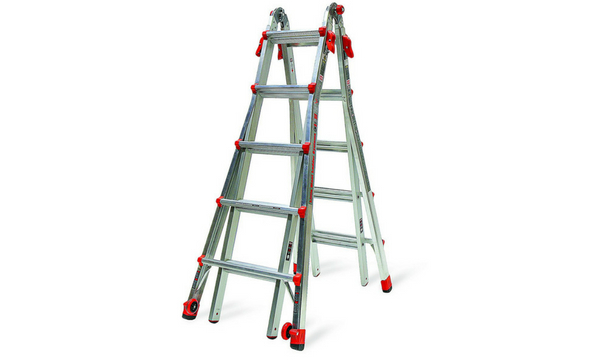
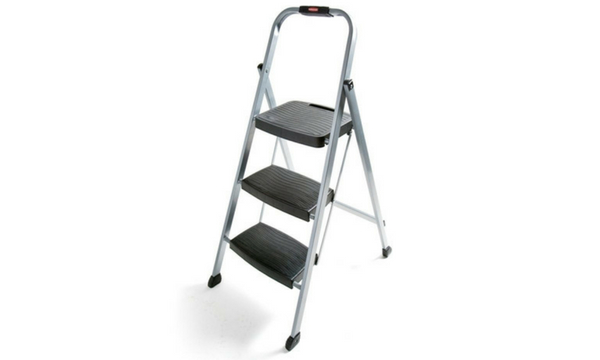
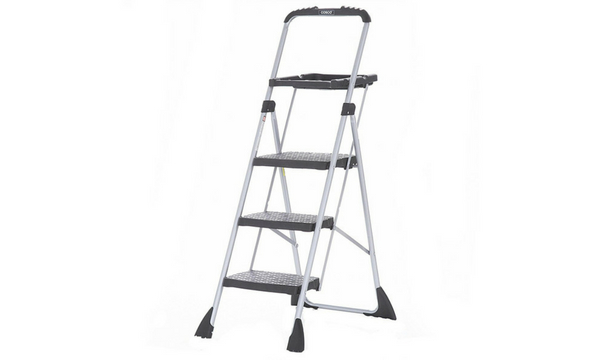
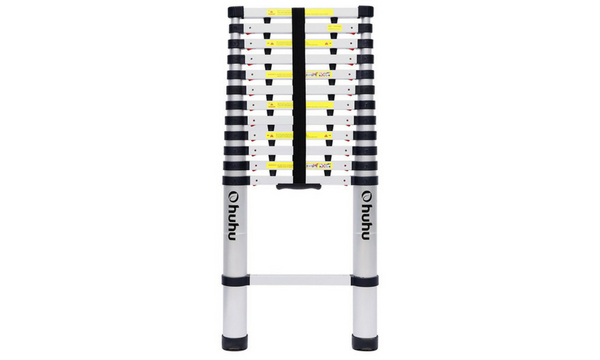
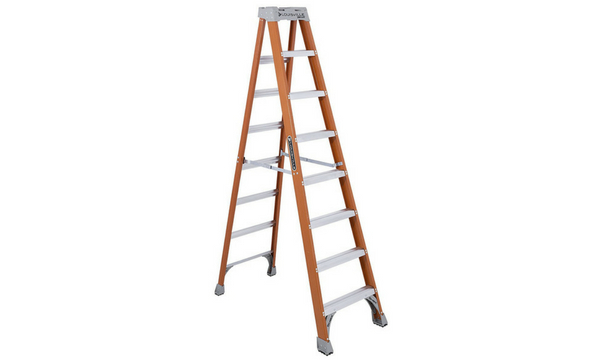
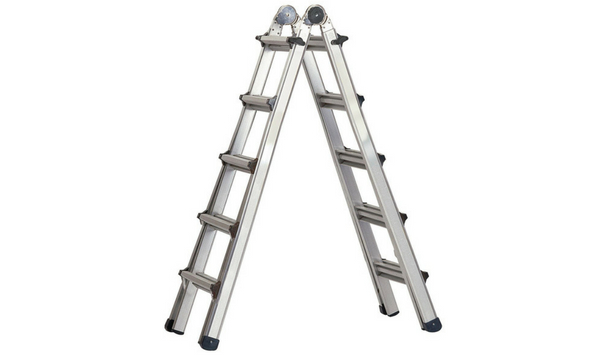
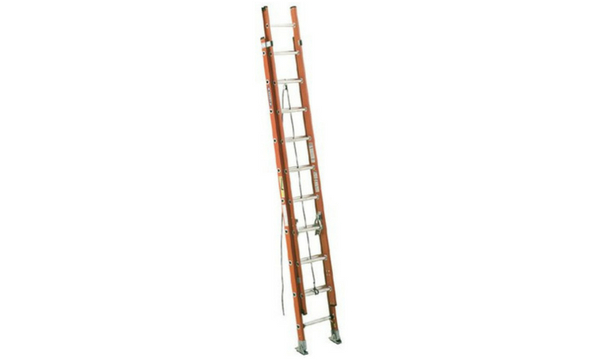
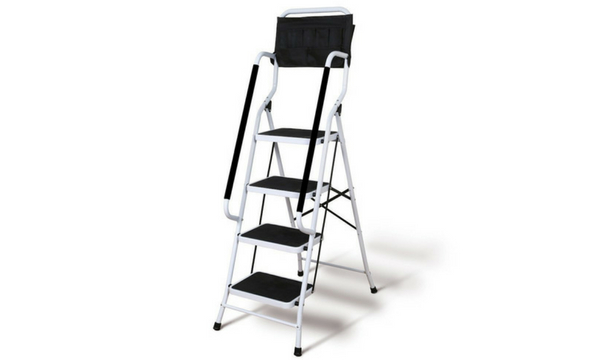
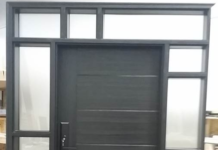










![Best Crochet Hooks for Beginners and Pros [2020 Update] best crochet books](https://www.awebtoknow.com/wp-content/uploads/2018/01/best-crochet-books-100x70.jpg)

